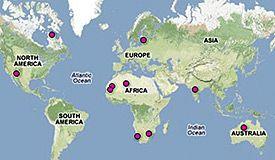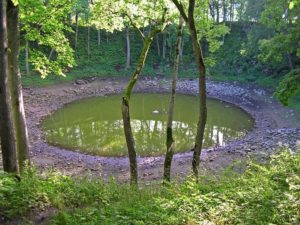Impact craters 🢔 Geological wonders 🢔 Categories of wonders
Wonder
Roter Kamm crater
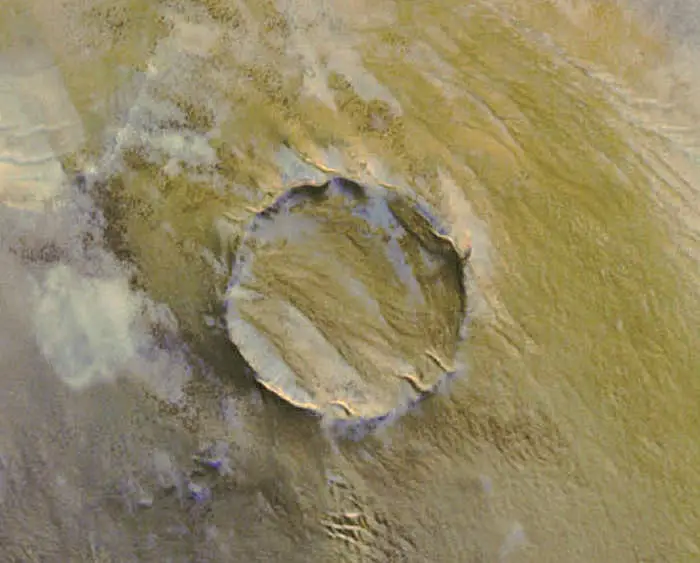
 In short
In short
The Roter Kamm crater (from German – "red ridge" crater) in the desolate sands of Namib Desert was created by a meteorite some 5 million years ago.
 42.3%
42.3%
GPS coordinates
Location, address
Diameter
Depth
Age
Map of the site
If you see this after your page is loaded completely, leafletJS files are missing.
 In detail
In detail
History
This crater is located in Sperrgebiet – a restricted area of Namibia reserved for diamond mining. Geologists noticed this structure in the 1960s, and meteoritic origin was proposed already in 1965 (1). Few people entered this remote part of Namib Desert – only in 1986 and 1987 further research took place and the impact origin of the Roter Kamm crater was confirmed.
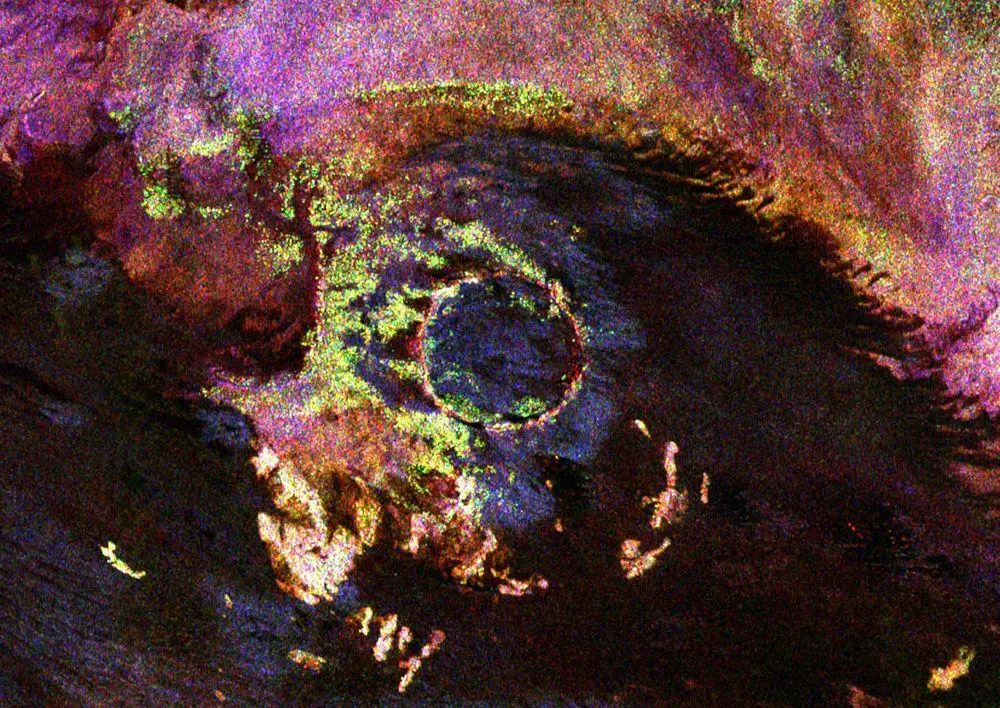
Researchers in the 1990s proposed that this meteorite fell approximately 3.7 million years ago. More recent research from 2008 shows different results (2) – laser argon dating shows that the impact took place some 4 – 5 million years ago, in Pliocene.
Geology
Diameter of this crater is 2.5 km and depth (height difference between the highest part of its rim and deepest part of central part) – 130 m. Rims of the crater rise some 40 – 90 m above the surrounding plain but the interior is located some 50 m below the surrounding plain.
It is estimated that the crater is filled with at least a 100 m thick layer of sand. Only in some sectors in the ridges is exposed bedrock. Roter Kamm crater is degraded but nevertheless, it is one of the best visible impact craters on Earth.
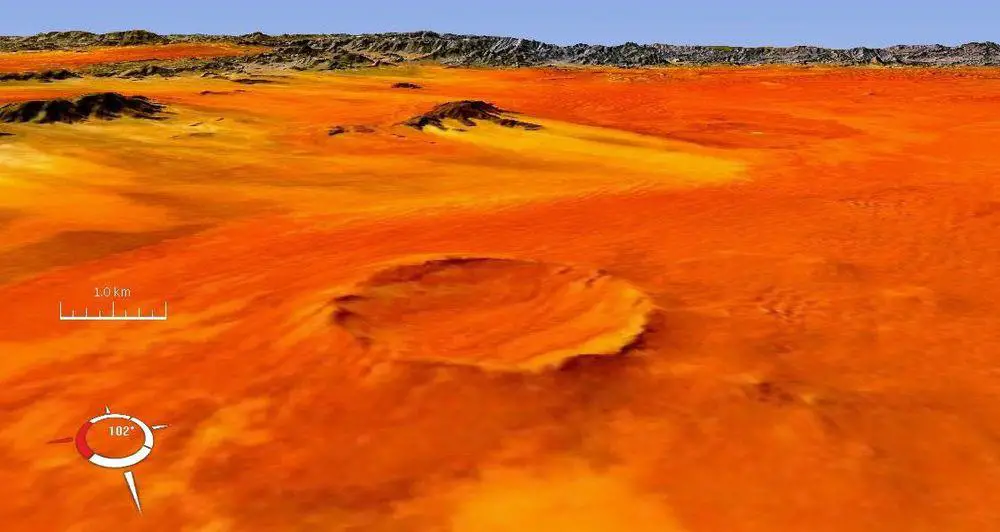
Meteorite here hit very old (Precambrian, 1.2 billion years) granitic gneiss – Namaqua Metamorphic Complex with some younger sedimentary rocks. There have been found no pieces of meteorite – most likely it has evaporated totally during the impact. Melted rocks contain traces of this chondritic meteorite.
Most ejecta is found to the northwest – west from the crater. This and the oblong shape of crater suggest that meteorite was falling from south-east.
References
- Dietz R. S., 1965. Roter Kamm, Southwest Africa – probable meteorite crater: Meteoritics, v.2.no.4.p.311 – 314.
- Lutz Hecht, Wolf Uwe Reimold, Sarah Sherlock, Roald Tagle, Christian Koeberl, Ralf-Thomas Schmitt. New impact-melt rock from the Roter Kamm impact structure, Namibia: Further constraints on impact age, melt rock chemistry, and projectile composition. Meteoritics & Planetary Science. Volume 43, Issue 7, pages 1201–1218, July 2008.
Roter Kamm crater is included in the following articles:
 Linked articles
Linked articles
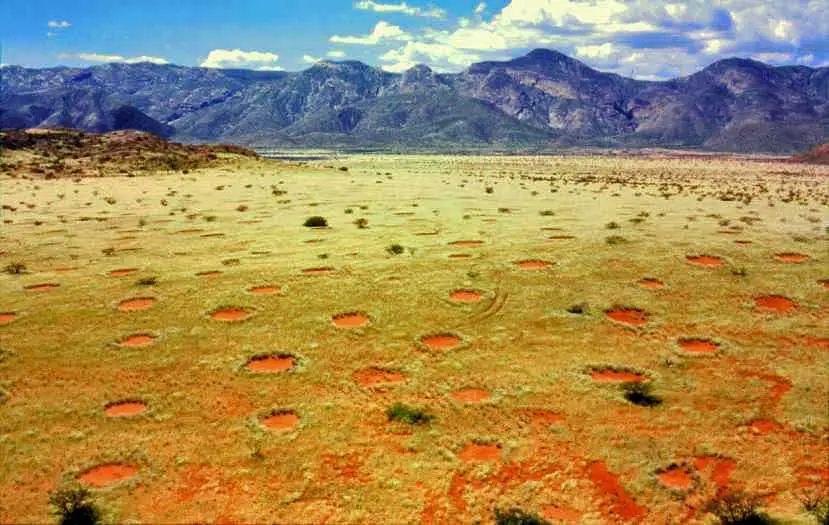
Wonders of Namibia
Few countries in the world have such visually stunning landmarks as Namibia – it is no wonder that the landscape of Namibia has been used to depict life on other planets.
There are found several unique landmarks without analogs – such as the largest piece of natural iron in the world (Hoba meteorite), the largest underground lake, 50 m long crystals, and some others.
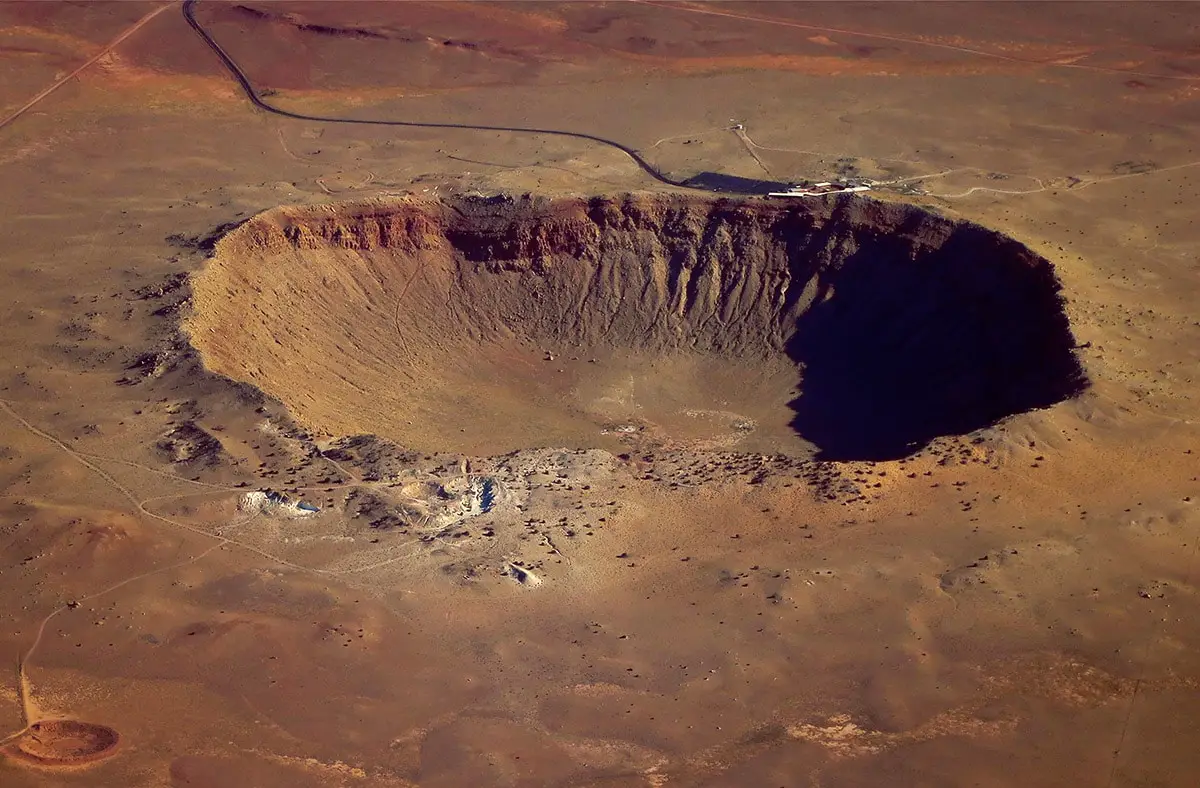
Impact craters
There are many pieces of solid matter flying around in space. And VERY frequently they fall on the surface of the Earth. There are estimates that every year on Earth fall 18,000 – 84,000 meteorites larger than 10 grams: e.g. one meteorite every 6 – 30 minutes.
This category includes outstanding impact craters – detectable scars on the surface of Earth left by a body coming from outer space. The category includes also meteorites – natural objects from outer space.
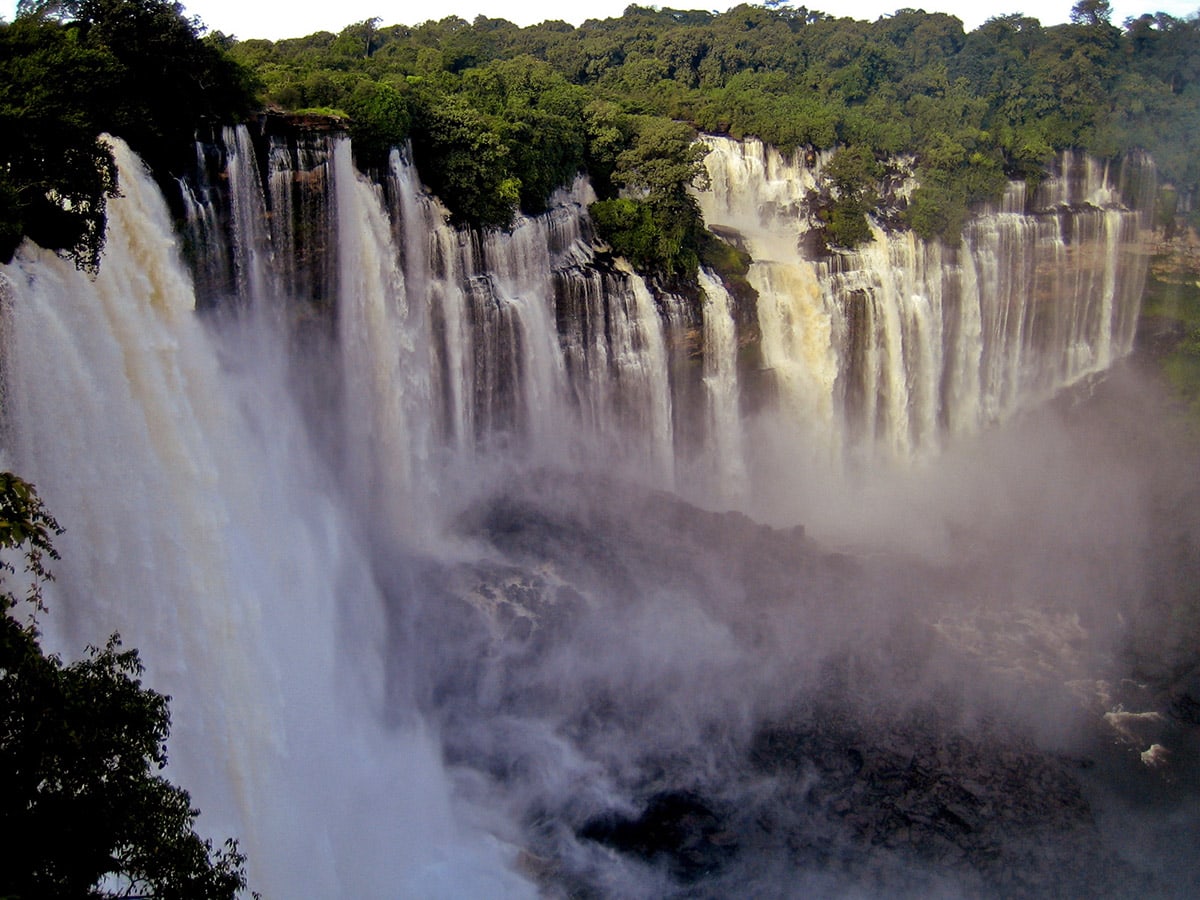
Wonders of Africa
Africa has many outstanding wonders and some of the most surprising ones are the heritage of Egyptian civilization, the vernacular architecture of the Sahel region, tropical ecosystems, and others.
 Recommended books
Recommended books
Geological Wonders of Namibia
A beautiful depiction (with explanations) of geology in Namibia, from impact crater sites, meteorites, canyons, and limestone caves to vast desert landscapes, moonscapes, and bizarrely shaped rocks, this picture-driven book will feature all the highlights of Namibian landscapes and landforms, with accessible brief explanations of the geology behind each of these.
This is Namibia
Namibia is a vast and mostly desolate country found on the west coast of southern Africa. Bisected by the Tropic of Capricorn, the country is bounded in the west by the icy Atlantic Ocean and in the east by the Kalahari Desert that stretches all the way into neighboring Botswana. Its remaining frontiers are drawn by rivers: the Kunene in the north, the Okavango in the northeast, and the Orange in the parched south.

